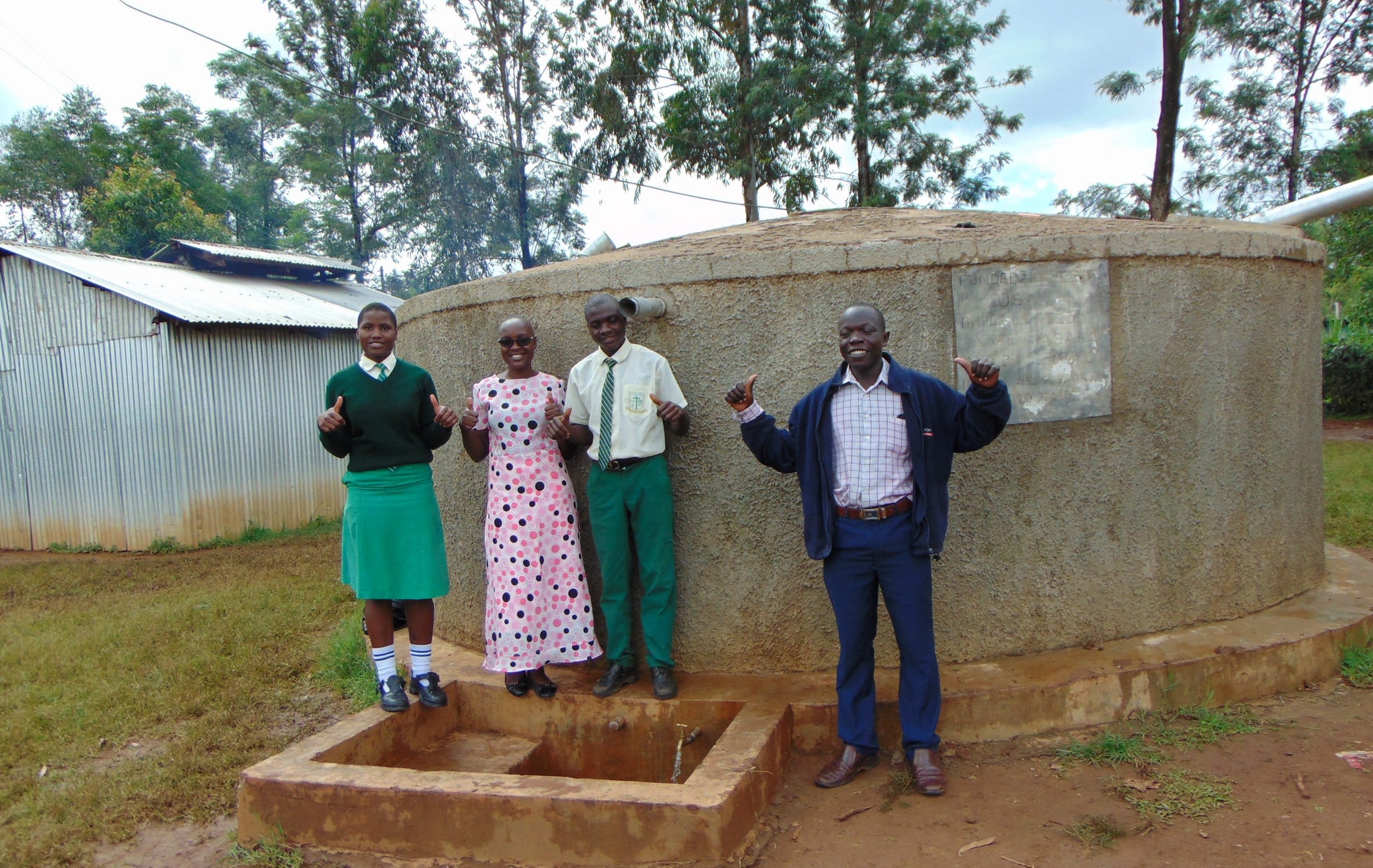Injira Secondary School just opened its doors to students, but it's already struggling to meet their needs. There aren't enough facilities - students are sharing classrooms, latrines, and water with the neighboring primary school.
A normal day begins very early in the morning at 6:30am students start arriving. They clean up classrooms before morning study hall begins. Once they've met to raise the flag and listen to announcements, they sit for normal classes until 4:30pm.
Water
There is a small plastic tank of about 10,000 liters that collects rainwater from the classroom roof. This quantity does not last long and students must look elsewhere for water.
The nearby primary school has a well on which the secondary section still depends. Since there are hundreds of students relying on this one pump to supply water, fights often break out. Who was there first? Whose water source is it in the first place?
The young students demand first in line with the rationale that it’s their water source, so the older students spend a lot of time waiting at the end of the line. While the schools can do their best to run on different schedules, there are often squabbles, and sometimes the secondary students are restricted from the water they need altogether.
Sanitation
There are three latrines at the secondary school, all of which have been set aside for the girls. The male students have to walk back to the primary school and share with the younger students. There are no hand-washing stations.
Principal Stanley Lilumbi admitted that his "school is in a very pathetic state for the boys, who do not have latrines that they can use. Thus, they use the primary section. Those are in poor working condition. The school has in fact been given a closure notice because the boys don't have their own sanitation facilities."
Here's what we're going to do about it:
Training
Training will be held for two days. The facilitator will use PHAST (participatory hygiene and sanitation transformation), ABCD (asset-based community development), CTC (child to child), lectures, group discussions, and handouts to teach health topics and ways to promote good practices within the school. The CTC method will prepare students to lead other students into healthy habits, as well as kickstart a CTC club for the school.
Hand-Washing Stations
This CTC club will oversee the new facilities, such as hand-washing stations, and make sure they are kept clean and in working condition. The two hand-washing stations will be delivered to the school, and the club will fill them with water on a daily basis and make sure there is always a cleaning agent such as soap or ash.
VIP Latrines
Two triple-door latrines will be constructed with local materials that the school will help gather. And with a new source of water on school grounds, students and staff should have enough to keep these new latrines clean.
Rainwater Catchment Tank
A 50,000-liter rainwater catchment tank will help alleviate the water crisis at this school. The school will also help gather the needed materials such as sand, rocks, and water from the spring for mixing cement. Once finished, this tank can begin catching rainfall that will be used by the school’s students and staff.
We and the school strongly believe that with this assistance, standards will significantly improve. These higher standards will translate to better academic performance!
This project is a part of our shared program with Western Water And Sanitation Forum (WEWASAFO). Our team is pleased to provide the reports for this project (formatted and edited for readability) thanks to the hard work of our friends in Kenya.

 Rainwater Catchment
Rainwater Catchment
 Rehabilitation Project
Rehabilitation Project

































